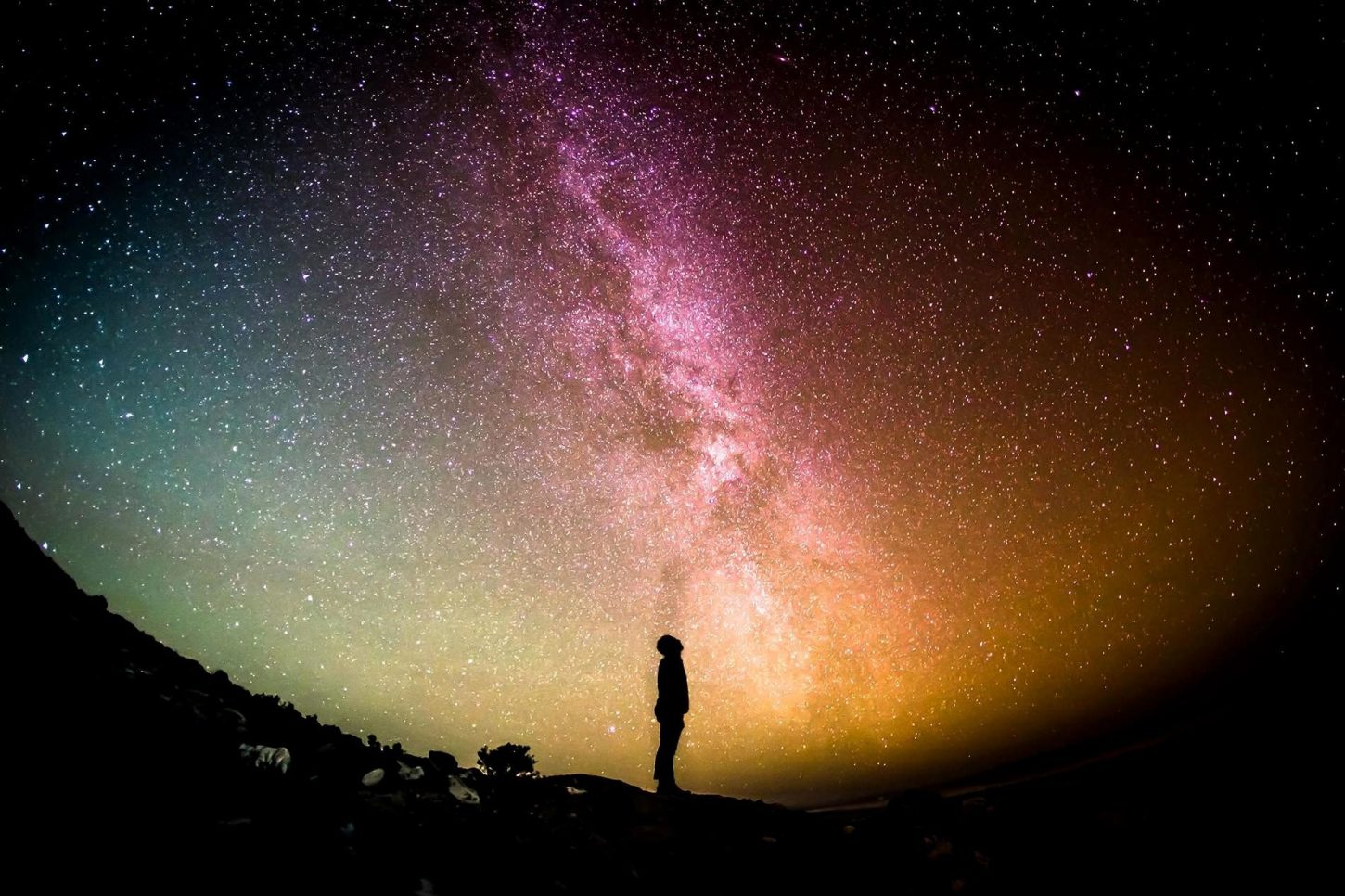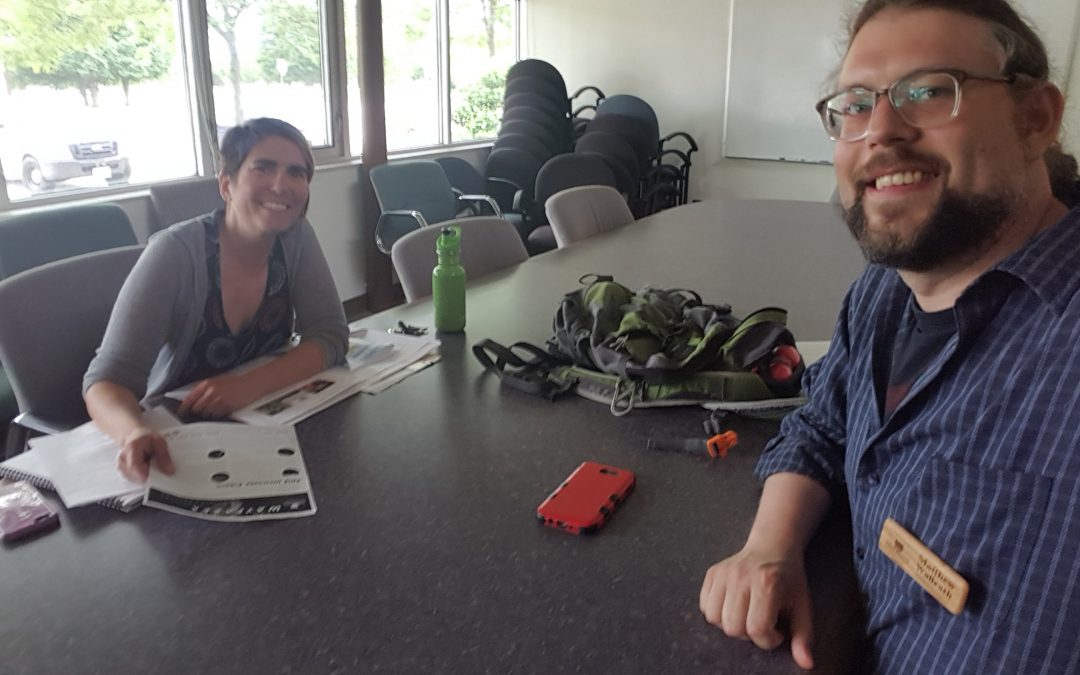By Matt Wallrath

Everyone deserves a chance to wonder at the natural world
This past summer I was fortunate to intern at the Natural Resources Foundation of Wisconsin (NRF) as interim outreach coordinator. This was part of my final course requirements for a M.S. in Environmental Conservation at the University of Wisconsin-Madison Nelson Institute for Environmental Studies. Alongside the day to day work of helping run the extensive Foundation Field Trip program, I conducted a special outreach project to dig in to how grants at the Foundation can better serve diverse populations around Madison. The goal was to help keep diversity, equity and inclusion in mind as the Foundation continues to evolve. My project has sparked a transformative cascade of events that will help inform institutional growth at the Foundation for years to come. I am excited to share some of my findings regarding DEI in conservation work.
The need for DEI in conservation work
This project grew out of a passion for connecting people to nature that I learned from my parents, who took myself and my friends from Milwaukee camping as kids. Witnessing the joy of a friend as he got out of the city and saw the stars clearly for the first time in his life, at age 9, has left an indelible mark on me. This experience is part of what has led me to a career in conservation and outdoor education.
It is vitally and increasingly important to consider diversity, equity, and inclusion (DEI) in our changing world. According to data from the 2010 U.S. Census, about 95 percent of seniors in Wisconsin identified their race as white. However, the same data shows that more than 25 percent of children in Wisconsin were people of color. This shows our shifting demographics, and why we need to focus on DEI if we want to continue our work to make conservation relevant and meaningful to all Wisconsinites.
I conducted my project in the form of listening sessions arranged with staff of local Madison nonprofits and city service organizations. I did this by meeting face to face and humbly asking ten different organizations how the Foundation could serve as a better ally in granting and long-term alliance building between our groups. In doing so, I gleaned some interesting insights regarding what is important to the leaders of these communities when applying for grants.
What I learned, I believe, could be useful to any conservation organization in Wisconsin seeking to connect and engage with a more diverse community. What follows is a summary of what came out of the interviews relating to grantmaking and community building. I’ve extrapolated some actionable suggestions based on the feedback I received. There are lots of suggestions and DEI can feel overwhelming. So rather than trying to take on all of these suggestions, I would encourage you to focus on a few that would be most useful to your organization and use those to start moving in the right direction.
Strategies for improving DEI in conservation organizations
More money per grant means more impact and better efficiency with staff time
Staffs of government organizations and non-profits are often pressed for time, and filling out grant applications can be time intensive. Grant programs that have award limits of $1000 may fall below the threshold of what grant specialists consider to be worth the margin of staff time to complete. Increasing the range of dollar amounts awarded would encourage organizations to apply for funding that would allow greater impact with their community members when compared to the expense that goes in to applying for and tracking a grant.
Multi-year funding opportunities were also suggested. This comment was a reply to funding options that work well for project partners. By committing to fund a project for multiple years, partners can work that money in to a future budget without having to re-apply. This improves efficiency with staff time and it allows some flexibility in programming.
Do not make the grant application complicated. Make grants simple.
By removing a few questions or asking for less information, grant applications can be less time intensive. This must be tempered with the need for competitive and well thought out applications.
Avoid buzz words and jargon in grant application process
Nonprofits and conservationists can fall into the same trap as many professions do by using industry-specific jargon. By taking the time to read through and modify grant applications with the eyes of a lay person, it will make the application process easier to understand and less intimidating to new audiences.
Make grant follow up and reporting easy
Easy follow up ties into simple applications. Making reporting easy and painless allows for a better margin of staff time relative to the amount of money received. Review the reporting process to ensure that the information being requested will be used in meaningful ways and cut out requirements that are nonessential.
Email reminders are key for grant application process
There are many grants in consideration for staff of participating organizations. Allowing potential grantees to sign up for email reminders help them stay informed about opportunities in a way that is easy for them.
Set clear and reasonable expectations for impact reporting
Community leaders mentioned that they have been involved with grants that seemed to expect huge impacts from relatively small grants. Clearly communicating the importance of impact reporting, while reducing anxiety, pressure, or misunderstandings around expectations could be helpful. When asking a grant recipient for numbers or information around project impacts, be clear in communicating that the expectation that not all projects will have results in all possible impact areas.
Most grant opportunities are found via word of mouth and directed outreach
Most grants come from the recommendations of other partner organizations and via direct outreach. This makes it vital to start to fund diverse community organizations, so that word of mouth can spread about the opportunities available. One way to do this would be to positively weight applications from diverse organizations to accelerate this process.
There’s power in face-to-face connections
Participants often mentioned the importance of personal interaction, and that they appreciated personal meetings. Phone calls and emails do not carry the same weight as an in-person interaction. The design of my listening project was well suited to foster these interactions. Attending partner events or organizing and attending new events or outings could be a powerful avenue to create this connection.
Long-term connection and commitment to DEI
I have heard in my survey that many well-intentioned projects fizzle out due to staff changes or a shift of interest from a nonprofit that is trying to make a difference in DEI issues. DEI initiatives have a disturbing trend to match the same long-term integration curves as “market fads”, which implies that organizations have a short-term investment that is not backed up by long-term commitments. Keeping DEI issues up to date in staff and board training and finding ways to engage communities for longer periods of time will help to resolve this challenge.
Connect with people of color in your community
Participants emphasized the need to get out and gain knowledge from people of color directly. To find what kinds of projects will fit into a community, the community itself could be polled to make sure that the project is in alignment with the needs of those being served.
Communities are looking for naturalists
Participants mentioned a need for good naturalists to drive home the connection to the outdoors. Conservation organizations like the Natural Resources Foundation of Wisconsin are well positioned to help fill this need.
“Translate me” link on home page
Not all people in Wisconsin are comfortable reading English. Adding an easy way to translate the web site into a different language clearly communicates a commitment to serving the diverse people of Wisconsin.
Join the City of Madison Racial Equity and Social Justice Initiative
The City of Madison has a comprehensive tool kit created for improving DEI issues, the Racial Equity and Social Justice Initiative (RESJI). Working with the free tools provided to help focus programs with DEI in mind could help with long term efforts. Consider using these tools, as well as connecting with the City of Madison Equity Coordinator to plan inexpensive future training.
Consider program scholarships
In seeking to encourage people in underprivileged communities to participate in fee-based programs, consider offering an option to apply for a scholarship. This both removes a barrier of access to programming and serves as an outreach tool.
Online and print representation matters
Seeing people that match your demographic is an important part of being willing to engage with a group or an activity. Be intentional and aware about including a diverse range of participants in the photographs you share on your website and social media. This will encourage a more diverse population to engage with the organization. Avoid tokenization by being authentic.
Identify unintentional areas of inequality in programming
In taking a candid look at our staff, board members, and volunteers, many conservation nonprofits will notice a bias towards educated middle to upper class, white individuals. The reality of this is that the people who make up your organization are almost entirely sourced from a place of privilege. Additional structures for finding and engaging members from many diverse backgrounds could help promote a more inclusive selection of leaders. These new members could serve as a valuable link to communities that have been historically left behind in the conservation movement.
The future of DEI in conservation
These practical steps are a part of a pathway to a more diverse organization. By connecting NRF with those that may not have a strong relationship with nature, I feel I am making an important long-term impact on citizens of our state beyond my time as an intern. It is inspiring to be part of the environmental social justice movement here in Wisconsin. I urge everyone reading this to find ways that they can strive towards DEI goals in their lives, both personal and on the job.
I am in awe of the support and enthusiastic commitment that we have received from the NRF board to continue this work as part of the long-term vision for development and growth. I will continue to volunteer to strengthen the partnerships we have created, and I look forward to the blooming of new initiatives that sprout from this work.
I’d like to extend special thanks to the staff of the organizations I interviewed, to Ruth and all the wonderful NRF staff for their support and continued encouragement, to my advisers Randy Stoecker, Nathan Schulfer, and James Edward Mills for helping craft a pertinent and efficient process, and to my partner Steph Lippert for her love and patience during many draft revisions and practice presentations.
